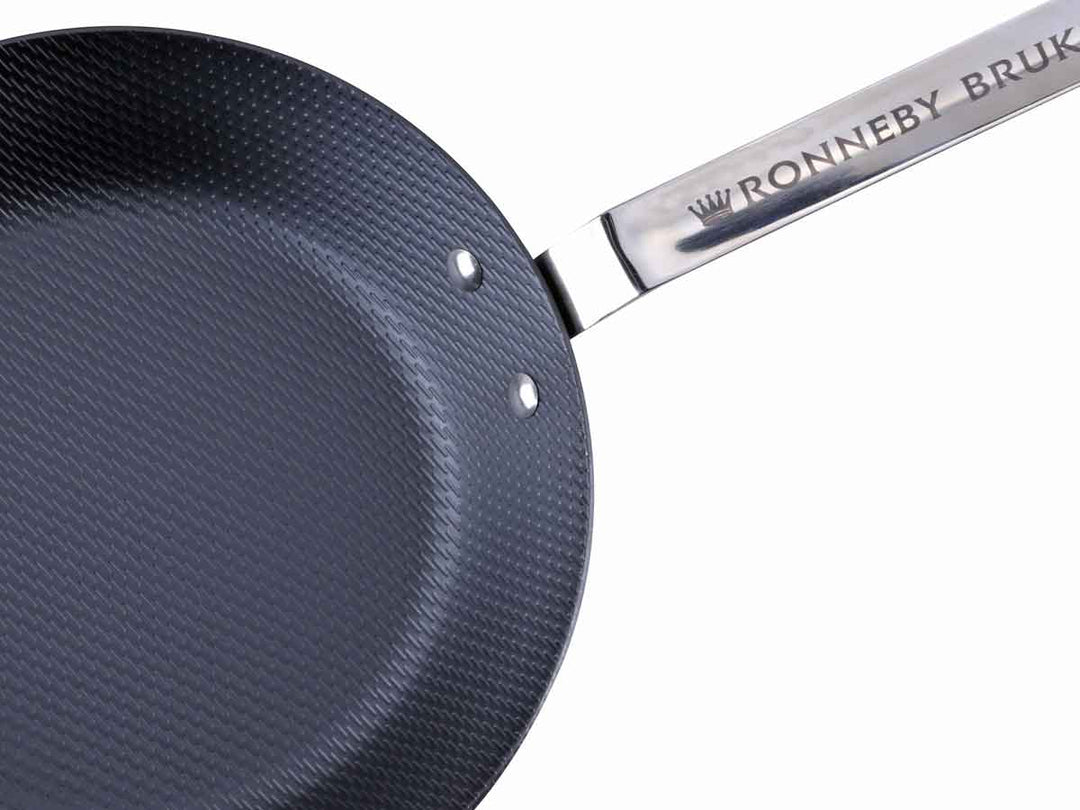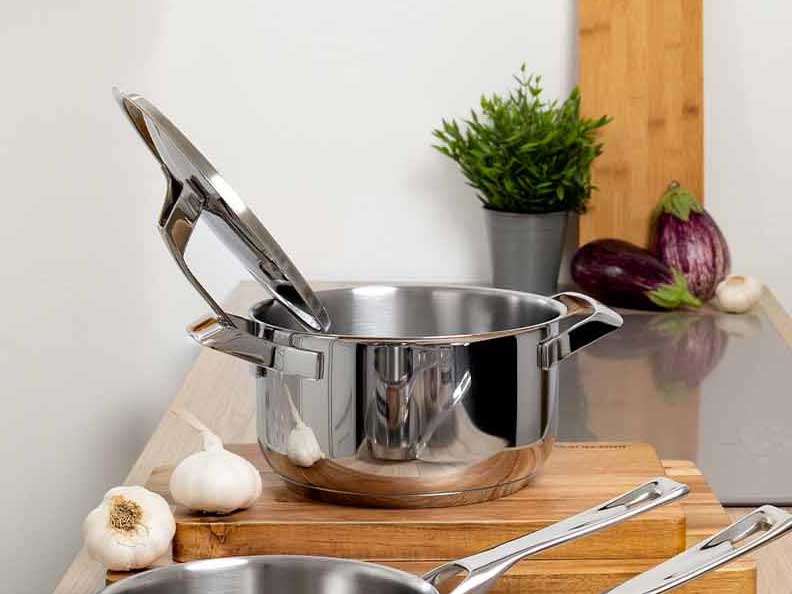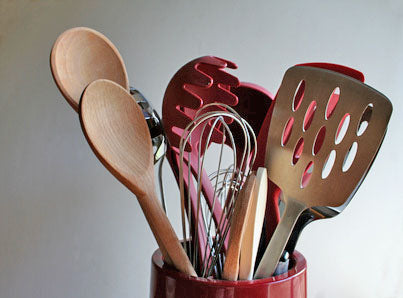cast iron
Cast iron is a material that has been used to make cookware for centuries. The variant of enamelled cast iron is not quite as old. Raw, uncoated, and enameled cast iron share many characteristics, but are also very different in some ways. In this respect, when considering the advantages and disadvantages, a distinction must always be made as to what exactly is being discussed.
Raw, uncoated cast iron
Unsealed cast iron cookware is often seasoned at the factory, which means a layer of cooking oil is sprayed on and then burned in a special oven. The cast iron pan can be used immediately thanks to the seasoning layer applied in the factory. With ongoing use, the seasoning layer improves even more if used and cared for correctly.
Enamelled cast iron
Enamelled cast iron cookware is coated with a thin layer of enamel and is therefore optimally protected against rust. Enamel is a vitreous coating that melts onto iron at 800-900 degrees. Like glass, enamel is very hard, non-porous and mostly smooth. Enamelled cast iron does not need to be seasoned.
Cast iron pans and pots are heavy
Cast iron cookware is one of the heaviest cookware there is. A solid cast iron pan is almost twice as heavy as a good cast aluminum pan. So if you have problems with your wrists, for example, you should think twice about purchasing a cast iron pan or even a cast iron roaster, which can weigh almost 10 kg, i.e. more than a six-pack of large, full PET water bottles.
Alternatively, there are also particularly light cast iron pans that only weigh a little more than a very stable pan made of stainless steel or cast aluminum. However, these lightweight cast iron pans are more expensive than traditional cast iron pans; an example is the ULTRA LIGHT PROFESSIONAL series by RONNEBY BRUK.
Advantages of raw, uncoated cast iron
+ extremely durable
+ scratch resistant
+ frying properties improve with longer use and a certain "non-stick effect" can be achieved
+ very suitable for induction, no whistling noises
Disadvantages of raw, uncoated cast iron
- high weight
- may rust
- not suitable for dishwashers
- under certain circumstances, food can stick
Advantages of enameled cast iron
+ durable
+ scratch resistant
+ very easy to care for, some even dishwasher-safe
+ well suited for induction, no whistling noises
Disadvantages of enameled cast iron
- high weight
- enamel can be damaged by thermal shock or impact
- food can stick
Cast iron takes some getting used to
Especially those who are switching from a non-stick coated pan to a raw cast iron pan should take some time to familiarize themselves with the frying properties of a raw cast iron pan. This can save you potentially frustrating frying mishaps. Before frying properly for the first time, for example, leave out fatty bacon in the new pan a few times.
In this way you avoid burning / sticking in the cast iron pan
Cast iron reacts sluggishly to changes in the heating level, but retains the heat it absorbs for a very long time. Anyone who has had an old electric stove with cast iron plates knows this all too well. It is therefore important not to select the highest stove power level when heating up the pan. Also note that the frying characteristics of a raw (and factory-seasoned) cast iron pan improve over time and are not 100% optimal to begin with. Patience and feeling when frying are trumps here.
Always heat enamelled cast iron slowly
Enamelled cast iron is like glass on iron. Cast iron and enamel expand at different rates when heated. In order to avoid stress cracks in the enamel, it is important to heat up enamelled cast iron pans and pots slowly. This advice applies in particular to users of induction cookers: Anyone who immediately turns on full power should not be surprised if the enamel cracks and flakes off with a loud bang!






